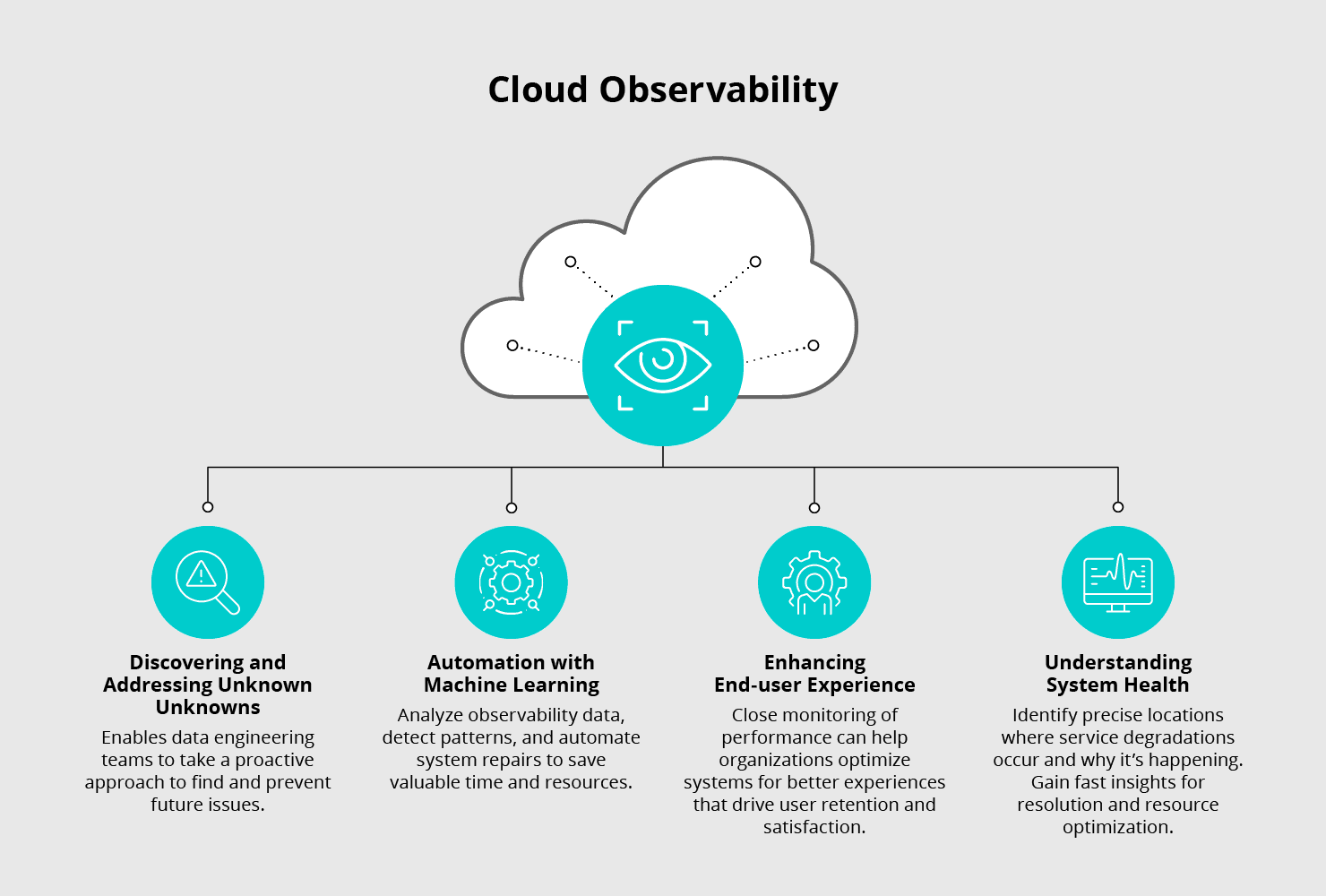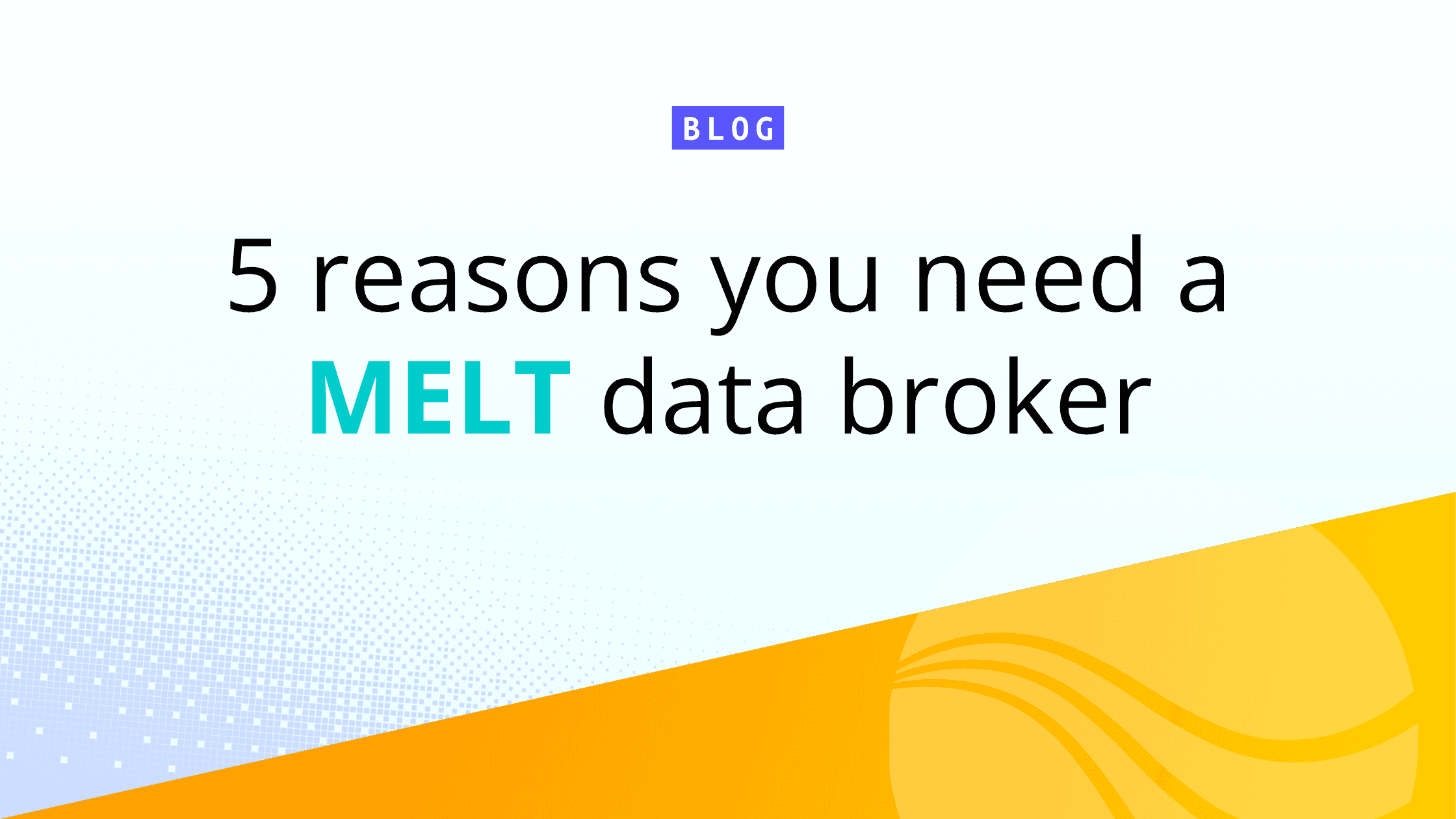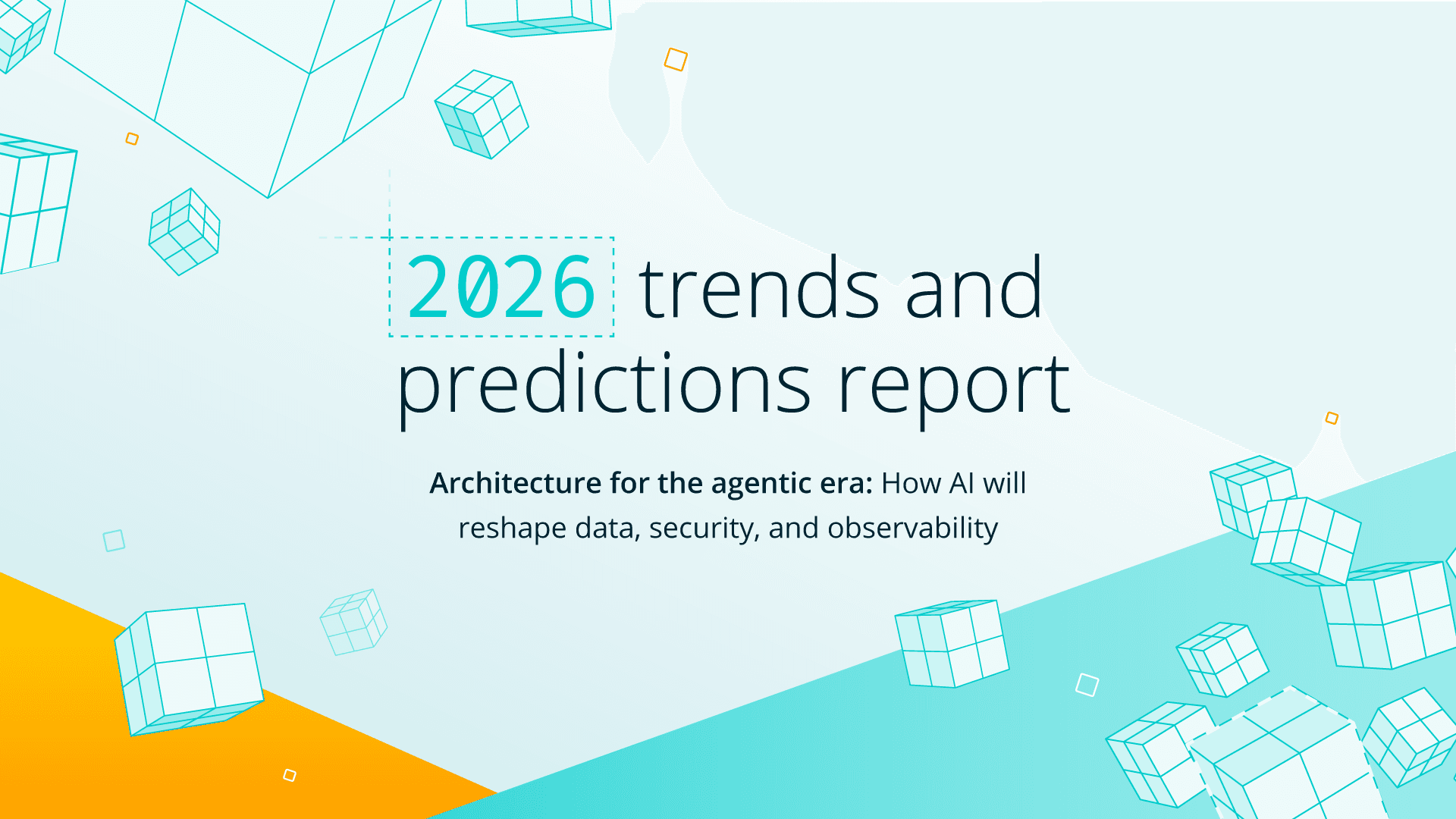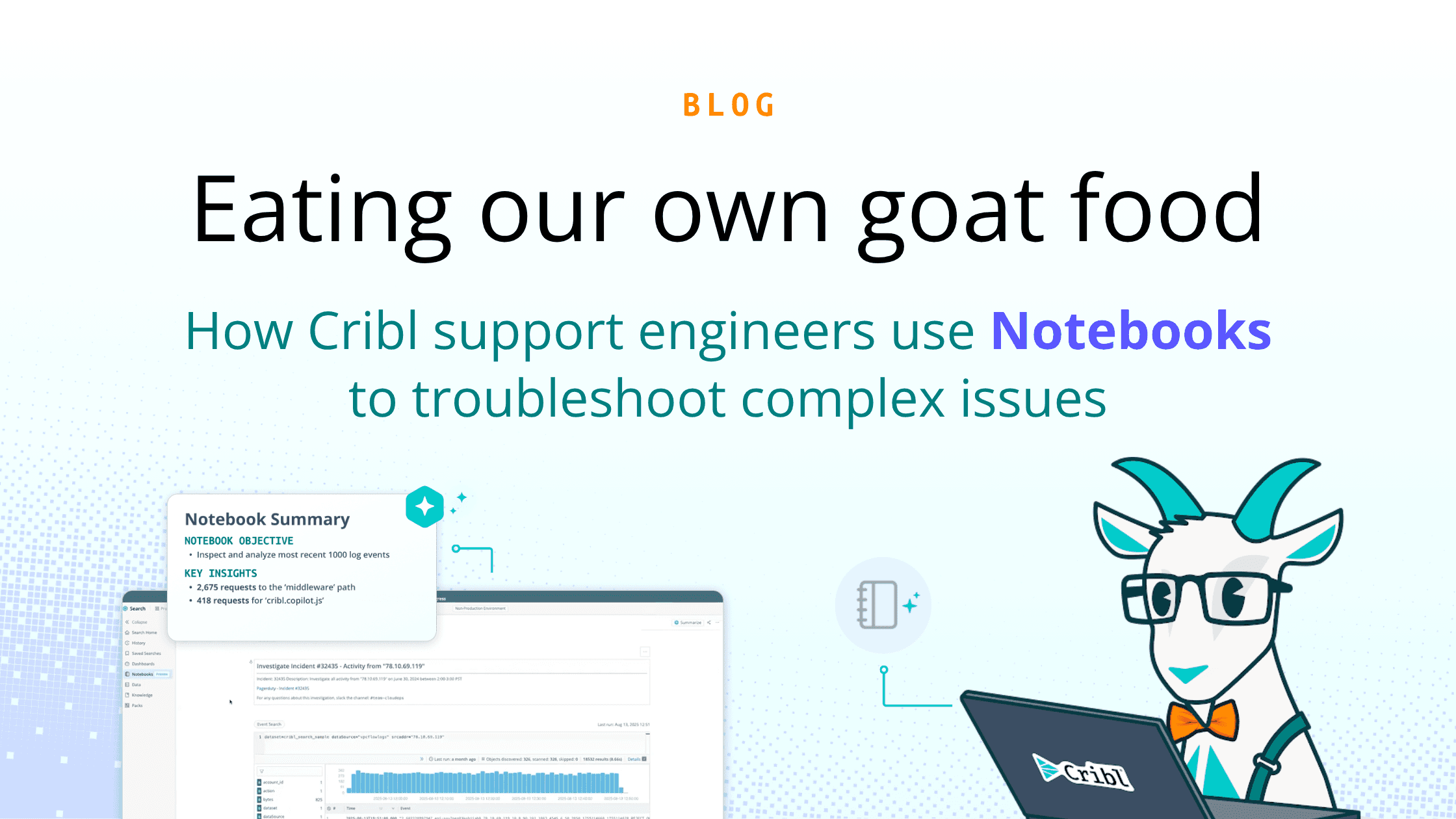A robust observability strategy forms the backbone of a successful cloud environment. By understanding cloud observability and its benefits, businesses gain the ability to closely monitor and comprehend the health and performance of various systems, applications, and services in use. This becomes particularly critical in the context of cloud computing. The resources and services are hosted in the cloud and accessed through different tools and interfaces.
Cloud observability enables businesses to proactively identify and address any issues, optimize performance, and enhance the security of their cloud-based operations. It also helps them control costs effectively. Let’s dive in and explore more about cloud observability and its benefits.
Benefits of Cloud Observability
Observability provides comprehensive visibility into data from all cloud providers (Amazon Web Services, Google Cloud Platform, Microsoft Azure, etc). It enables individuals within an organization to gain access to and view this data, subject to appropriate access controls, data governance, and compliance regulations. With seamless availability and real-time data visibility, teams can streamline release cycles more efficiently. This ultimately leads to a greater extent of enhancing user experiences.
By leveraging the power of observability, organizations can ensure that relevant stakeholders have the necessary insights and information at their fingertips, leading to improved decision-making and overall operational excellence.
Why is Cloud Observability Important?
Cloud observability is an important part of maximizing the performance and reliability of distributed IT systems. This is particularly crucial when dealing with a large number of remote teams. Observability empowers teams to gain valuable insights and establish a robust pipeline for identifying the root causes of problems, by leveraging metrics, logs, traces, and telemetry data.
Let’s explore why cloud observability is important in more detail:
Discovering and Addressing Unknown Unknowns
Cloud observability goes beyond traditional monitoring. It enables data engineering teams to identify unexpected signals or “unknown unknowns” in the environment. This proactive approach helps prevent future issues. It also enhances system performance by addressing hidden challenges that may not have been anticipated by IT teams.
Automation with Machine Learning
The integration of cloud observability with machine learning capabilities opens up exciting opportunities for automation. By utilizing machine learning algorithms, businesses can analyze observability data, detect patterns, and automate system repairs. This not only saves valuable time and resources but also enables rapid problem resolution and continuous improvement.
Enhancing End-User Experience
Cloud observability plays a vital role in creating an exceptional end-user experience. Through close monitoring of system performance and identification of areas that can be enhanced, organizations can optimize their systems. This will also provide users with a seamless and gratifying experience. This focus on user-centric observability helps build trust, loyalty, retention, and customer satisfaction.
Understanding System Health
Observability simplifies the process of identifying the precise locations where service degradations occur. It ensures fast and efficient troubleshooting when dealing with cloud system health. This becomes even more critical in a cloud environment where the presence of performance bottlenecks and resource capacity challenges is critical. These can have severe repercussions across multiple teams and even the bottom line of the business.
By using observability tools, teams gain insights for faster issue resolution and resource optimization. This includes important aspects like CPU, storage, and memory. With this knowledge, IT teams can make informed capacity planning decisions, leading to smarter resource allocation and cost savings.
The power of observability lies in its ability to provide real-time visibility into the performance and utilization of resources. It empowers a proactive approach to address issues and maintain optimal operational efficiency.
Cloud Observability Addresses Problems Proactively
For cloud computing, the significance of cloud observability cannot be overstated. It plays a major role in empowering businesses to achieve operational excellence and stay ahead of potential challenges as their use of cloud services grows.
While a monitoring tool provides valuable insights into the current state of affairs, an observability tool takes it a step further by offering proactive monitoring and trend analysis. By continuously monitoring and analyzing data from various sources, including logs, metrics, and traces, cloud observability tools help organizations detect patterns, identify anomalies, and anticipate potential issues before they manifest into full-blown problems. This early warning system enables teams to take preventive measures, ensuring that systems remain resilient and user experiences are not disrupted.
Cloud observability provides real-time tracking of system performance using advanced analytics and machine learning. It not only monitors current performance but also predicts future behavior. It helps organizations identify potential bottlenecks, resource constraints, or vulnerabilities that could affect system performance. With this knowledge, businesses can proactively allocate resources, optimize capacity planning, and implement preventive measures to mitigate similar issues in the future.
Moreover, the observability pipeline serves as a gateway to open new possibilities and extract important insights from the vast amounts of data generated within a cloud environment.
By harnessing the potential of cloud observability, companies can pose pertinent questions to their data and uncover hidden trends, correlations, and dependencies. This data-driven approach enables them to make informed decisions, identify optimization opportunities, and drive continuous improvement across their cloud infrastructure and services.
Cloud observability is especially valuable in complex and distributed cloud environments where businesses rely on multiple cloud providers. It provides a unified view of data and performance metrics from different clouds, enabling stakeholders to gain comprehensive insights into the overall health and functioning of their entire cloud ecosystem. This holistic perspective empowers organizations to identify cross-cloud dependencies, troubleshoot inter-cloud issues, and optimize resource allocation across diverse cloud platforms.
Enhanced Security of the Cloud
Maintaining robust data governance and security measures is paramount for businesses of all sizes, particularly when operating in cloud environments. Safeguarding sensitive data across various cloud platforms presents a significant responsibility, requiring security teams to ensure comprehensive security is in place – even when using open-source tools.
Cloud observability tools offer a seamless solution for establishing a centralized observability pipeline that aligns with data governance principles. By defining rules and guidelines one time, IT teams can effortlessly enforce consistent standards across multiple systems. This centralized approach not only streamlines the implementation of data governance practices but also ensures that data is masked before being ingested by analytics tools.
To address privacy concerns, observability pipelines incorporate essential mechanisms such as redaction and masking. These features safeguard sensitive data, shielding it from unauthorized access and ensuring that only authorized individuals have visibility into specific information. By employing these privacy-enhancing techniques, organizations can prioritize the protection of their customers’ data, thereby minimizing liability and maintaining compliance with regulatory requirements.
Leveraging an observability pipeline allows businesses to establish a service-level framework that enhances operational efficiency, and improves data governance and security practices. It also drives benefits for site reliability engineers (SRE). The seamless integration of data governance guidelines and configuration of data streams enables businesses to optimize the protection of sensitive data across their cloud platforms. This proactive approach enables them to mitigate potential risks, maintain customer trust, and uphold their commitment to data privacy.
The Future of Cloud Observability
Cloud observability is integral to modern IT infrastructure, providing valuable insights and proactive monitoring for enhanced performance and reliability. It helps teams uncover hidden issues, address challenges, and prevent future problems.
As cloud services expand, application performance monitoring (APM) and cloud observability tools are becoming essential for IT professionals. IT teams can closely monitor application performance and utilize AI and machine learning. They can also detect and resolve issues early, automating system repairs for improved efficiency.
Additionally, cloud observability plays a pivotal role in delivering an exceptional end-user experience. This is achieved by optimizing system performance and ensuring a seamless user interface. Organizations can realize the full potential of their cloud environments, enhance operations, and achieve continuous improvement by embracing cloud observability practices.







